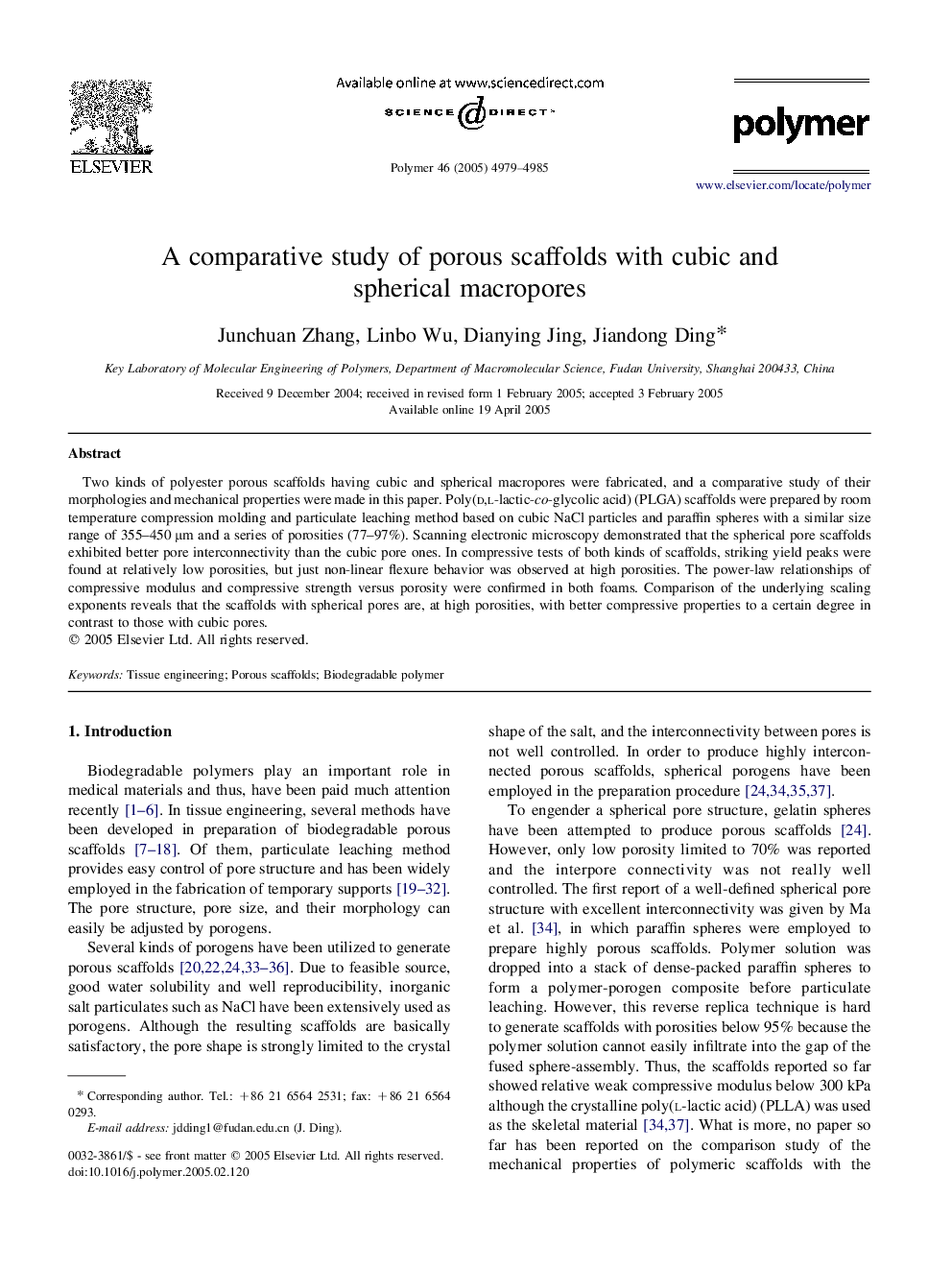| Article ID | Journal | Published Year | Pages | File Type |
|---|---|---|---|---|
| 5191664 | Polymer | 2005 | 7 Pages |
Abstract
Two kinds of polyester porous scaffolds having cubic and spherical macropores were fabricated, and a comparative study of their morphologies and mechanical properties were made in this paper. Poly(d,l-lactic-co-glycolic acid) (PLGA) scaffolds were prepared by room temperature compression molding and particulate leaching method based on cubic NaCl particles and paraffin spheres with a similar size range of 355-450 μm and a series of porosities (77-97%). Scanning electronic microscopy demonstrated that the spherical pore scaffolds exhibited better pore interconnectivity than the cubic pore ones. In compressive tests of both kinds of scaffolds, striking yield peaks were found at relatively low porosities, but just non-linear flexure behavior was observed at high porosities. The power-law relationships of compressive modulus and compressive strength versus porosity were confirmed in both foams. Comparison of the underlying scaling exponents reveals that the scaffolds with spherical pores are, at high porosities, with better compressive properties to a certain degree in contrast to those with cubic pores.
Related Topics
Physical Sciences and Engineering
Chemistry
Organic Chemistry
Authors
Junchuan Zhang, Linbo Wu, Dianying Jing, Jiandong Ding,
